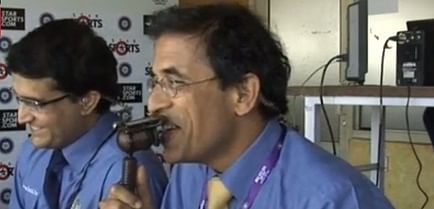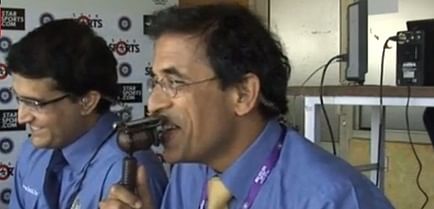
Cricket Commentary – The Good, the Bad and the Ugly

All of us love watching cricket. It is a way to unwind after a hectic day, a way to forget our real-life troubles and cheer for our favourite team. While purists maintain that Test cricket is a true test of a cricketer’s ability (and they are correct), one cannot argue with the fact that after a certain amount of time, Test cricket can get boring – batsmen protecting their wicket, bowlers probing away with their line-and-length and runs hard to come by. Test cricket also has a quality very much unique to itself – there can be a stalemate after five long days of play!
Thus, while viewing Test cricket can be perceived as quite an uphill task, the experience can be significantly improved if it is supplemented by good commentators. People like Harsha Bhogle, Sunil Gavaskar, Sourav Ganguly, Wasim Akram, Ravi Shastri and Alan Wilkins are amongst the most underrated in cricket in terms of the role they play in bringing cricket to us. Every commentator brings something new with his commentary, and listening to them can spark interest in a lifeless match. In commentary though, as in life, there is good and bad.
The Good
Let’s talk about the topmost ‘rung’ of the commentary ladder.
Harsha Bhogle is perhaps the best commentator in world cricket today – not only does he have tremendous knowledge, but his wit is immense and he is able to spurn out one-liners that have a tendency to stay with the listener.
Sunil Gavaskar is well-known for his simple yet correct commentary – he is not politically correct all the time, and speaks his mind. However, the best part of his commentary is the insight a listener gets into the mindset of a batsman at times – what goes on when he comes out to bat, what happens when he gets that first century etc.
Sourav Ganguly, a recent addition to the commentators’ panel, is also a lot like Sunil Gavaskar in that sense – since he was a terrific batsman, listening to him criticize or laud a batsman’s shot seems to be alright – he’s earned that right. He is also a bit blunt, and has never been known to be politically correct.
Wasim Akram was perhaps a much-needed addition to the commentary panel – there have always been far too many batsmen-commentators. His knowledge of the game, particularly of every variation a fast bowler has, truly intimidates the listener, and his, for lack of a better word, ‘cute’ English is fun to hear. These people make up the good commentators’ section – you wait for them to come to the commentary box.
The Bad
While not strictly ‘bad’, the middle ‘rung’ of commentators includes people who are tasked with filling up the spots – those who do not have anything special to them, but also do not get boring or annoy you. People like Matthew Hayden, Shane Warne, Danny Morrison, Alan Wilkins, Ian Bishop – you don’t have a problem if they’re there, but you’d like for one of the better commentators to be with them.
The Ugly
The lower ‘rung’ of commentators includes people that have one annoying quality or the other – you’d rather not hear them speak.
This includes people like Navjot Singh Sidhu, Ramiz Raja, Ravi Shastri, Arun Lal and Lakshman Sivaramakrishnan. With Sidhu, his ‘quotes’ were fun to hear in the beginning, but now it seems a bit too much when he throws them in every second line he says.
Ramiz Raja is perhaps the worst commentator in cricket today – he gets his facts wrong, he is too biased in India-Pakistan matches and his commentary can make a good match dull.
Ravi Shastri is the master of clichés – always starts the presentations with ‘We’ve witnessed today… ’, always uses the following lines in every match – ‘… that went like a tracer bullet’, ‘just get the feeling that …’ amongst many more.
Arun Lal and Lakshman Sivaramakrishnan are both very mundane and dull commentators – they simply state the obvious. In the bygone era, when matches played in India were broadcast on DD Sports only, the quality of commentary was pathetic, and it makes for a very refreshing change to have Star Sports broadcast Indian cricket.